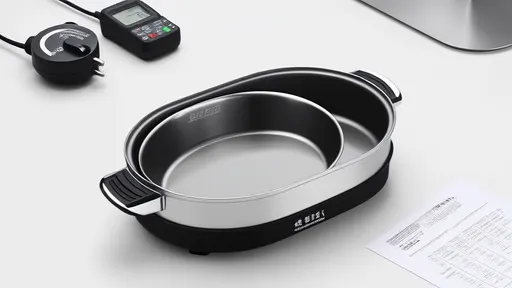The global market for portable electric cooking appliances has seen a significant surge in recent years, with foldable electric cookers emerging as a popular choice among travelers, students, and urban dwellers. One of the key challenges faced by manufacturers and consumers alike is ensuring compatibility with varying voltage standards across different countries. This report delves into the intricacies of voltage compatibility for foldable electric cookers, examining how they adapt to diverse electrical infrastructures worldwide.
Understanding Voltage Standards Across Regions
Voltage standards vary considerably from one country to another, primarily falling into two broad categories: 110-127 volts and 220-240 volts. North America, parts of South America, and Japan typically operate on 110-127V systems, while Europe, Asia, Africa, and Australia predominantly use 220-240V. This divergence stems from historical developments in electrical infrastructure and regional preferences. For foldable electric cookers, which are designed for portability and international use, navigating these differences is crucial.
The internal circuitry of these devices must be robust enough to handle both voltage ranges without compromising performance or safety. Many premium models achieve this through advanced power supply units that automatically detect and adjust to the input voltage. This feature eliminates the need for manual switches or external voltage converters, making the devices more user-friendly for globetrotters.
Technical Considerations in Voltage Adaptation
Manufacturers employ several strategies to ensure their foldable electric cookers work seamlessly across different voltage zones. Some models incorporate dual-voltage capabilities by using switching power supplies that can operate efficiently within a wide voltage range. These sophisticated systems continuously monitor the incoming power and adjust the internal components accordingly to maintain consistent cooking performance.
Heat distribution and power output present additional challenges when dealing with varying voltages. A cooker designed for 220V markets might deliver insufficient heat when operated at 110V unless properly engineered. To address this, some manufacturers implement power compensation circuits that boost performance at lower voltages while preventing overheating at higher voltages. This delicate balance requires precise engineering and thorough testing to ensure reliability across all operating conditions.
Safety Mechanisms and Certification Challenges
International safety certifications play a vital role in the global distribution of foldable electric cookers. Products must meet stringent standards such as UL for North America, CE for Europe, and CCC for China. These certifications not only validate voltage compatibility but also ensure the devices adhere to regional safety protocols regarding electrical insulation, temperature control, and material safety.
Overcurrent protection becomes particularly important in dual-voltage appliances. Quality foldable cookers incorporate multiple safeguard features including thermal fuses, automatic shut-off mechanisms, and reinforced insulation. These precautions prevent potential hazards that could arise from voltage fluctuations or improper use in incompatible electrical systems.
Real-World Performance Across Different Markets
Field tests reveal interesting variations in how foldable electric cookers perform under different voltage conditions. In 220V environments, most units reach optimal cooking temperatures faster and maintain more stable heat levels. The same models operating at 110V might show slightly longer heating times but often compensate with more consistent temperature control once the desired heat level is achieved.
User experiences highlight the importance of clear voltage specifications on product packaging and manuals. Some consumers report frustration when discovering their purchased cooker doesn't support their local voltage, emphasizing the need for better consumer education on this technical aspect. Manufacturers that provide comprehensive voltage information and compatibility guidelines tend to receive higher customer satisfaction ratings.
Future Developments in Universal Voltage Design
The industry continues to innovate in voltage adaptation technology. Emerging solutions include smart voltage detection systems that not only adjust to the local power supply but also optimize energy consumption based on the available voltage. Some prototypes incorporate USB Power Delivery compatibility, allowing the cookers to operate from various power sources including laptop chargers and power banks.
Material science advancements contribute to better thermal efficiency across voltage ranges. New composite heating elements maintain consistent performance regardless of input voltage, addressing one of the longstanding challenges in portable cooking appliances. These developments promise to make foldable electric cookers even more versatile for international users.
As global travel resumes and digital nomadism grows, the demand for truly universal cooking appliances will likely increase. The next generation of foldable electric cookers may incorporate wireless connectivity to provide real-time voltage monitoring and adaptive performance tuning through companion smartphone apps. Such innovations could redefine what users expect from portable kitchen appliances in terms of both convenience and cross-border functionality.

By /Aug 4, 2025

By /Aug 4, 2025

By /Aug 4, 2025

By /Aug 4, 2025

By /Aug 4, 2025

By /Aug 4, 2025

By /Aug 4, 2025

By /Aug 4, 2025

By /Aug 4, 2025

By /Aug 4, 2025

By /Aug 4, 2025

By /Aug 4, 2025

By /Aug 4, 2025

By /Aug 4, 2025

By /Aug 4, 2025

By /Aug 4, 2025

By /Aug 4, 2025

By /Aug 4, 2025

By /Aug 4, 2025

By /Aug 4, 2025